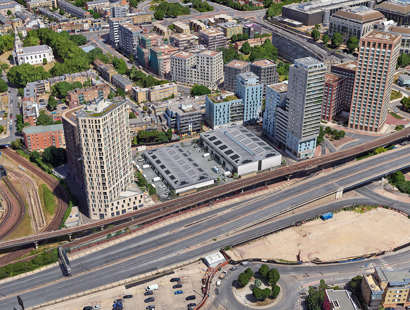
Biodiversity Net Gain (BNG) and change of use applications
The Biodiversity Net Gain (BNG) requirement in England became effective on 12 February 2024, compelling all planning permissions to positively impact biodiversity. In this article, associate Tom Jenkins explains what it is, what its aims are and how it will impact change of use applications.
What is Biodiversity Net Gain (BNG)?
BNG is a relatively new requirement in England (introduced by Schedule 7A of the Town and Country Planning Act 1990 (TCPA)). The BNG requirement means that, for all planning applications made after 12 February 2024, every planning permission will have a BNG Condition attached. This condition requires a Biodiversity Gain Plan to be submitted and approved by the Planning Authority prior to commencement of the development (Paragraph 13 Schedule 7A TCPA 1990).
This applies except in cases where:
- development is below a certain threshold
- planning permission has been granted retrospectively
- s73 variation permissions where the original permission was granted before 12 February or the application for the original permission was made before 12 February
- householder applications
- self-build
- development pursuant to permitted development rights
- urgent Crown development (section 293A), or other similar developments that the Secretary of State specifies in regulations (paragraph 17, schedule 7A)
What does Biodiversity Net Gain (BNG) aim to do and how can the objective be met?
BNG aims to create and increase biodiversity by making it a requirement that development impacts positively (creates a ‘net gain’) on biodiversity. This may be achieved, for example, by means of onsite biodiversity gains, registered offsite biodiversity gains or statutory biodiversity credits.
The biodiversity gain objective/condition is met if the development increases the biodiversity value of the site by at least 10%, relative to the pre-development value of the onsite habitat, this percentage subject to change by the Secretary of State.
Are all change of use developments subject to Biodiversity Net Gain?
The Guidance (Biodiversity Gain Requirements (Exemptions) Regulations 2024) sets out the following exemption which will be relevant for many change of use applications:
De minimis exemption (Regulation 4)
The de minimis exemption is designed to cover planning permission for developments of such a small scale that no or minimal loss to habitat value is entailed. Two conditions must be met for this exemption to apply: firstly, the development must not impact an onsite priority habitat (defined as a habitat specified in a published list); secondly, the development must impact no more than 25 square metres of onsite habitat with a biodiversity value greater than zero, and no more than five metres in length of onsite linear habitat. Therefore, this exemption will apply depending on whether a habitat is impacted; a habitat being deemed to be impacted when it is lost or degraded in such a way that there is a decrease in the biodiversity value of that habitat (Regulation 4(b)). But a change of use application does require the provision of biodiversity net gain.
What does this mean for change of use applications?
Change of use applications whilst therefore not exempt per se will usually fall under the de minimis exemption set out above. In most cases, where a change of use application is submitted the land in question is already developed and so any the habitat score will likely be zero and so no BNG is required.
Although the statutory BNG condition will not be required therefore for most change of use applications, Planning Authorities and other stakeholders may still require lesser improvements in biodiversity to be made for change of use applications so local plan policy still needs to be checked.
Get in touch
If you would like to speak with a member of the team you can contact our real estate planning and construction solicitors; Holborn office (Email Holborn) +44 (0)20 3826 7523; Kingston office (Email Kingston) +44 (0)20 3826 7518; Putney office (Email Putney) +44 (0)20 3826 7518 or complete our form.










